In pictures: Relics discovered in Mexico's Teotihuacan
- Published
Some 50,000 relics have been discovered in Mexico in the ancient city of Teotihuacan, Mexican archaeologists say.
The city, located about 50 km (30 miles) northeast of Mexico City, dominated central Mexico in pre-Columbian times.
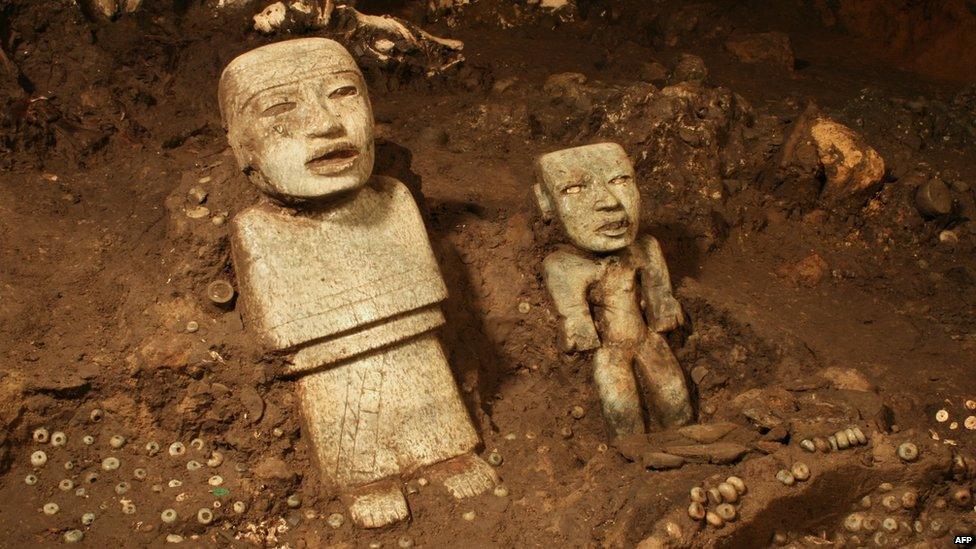
The relics found include jewellery, seeds, animal bones and pottery like these human figurines.
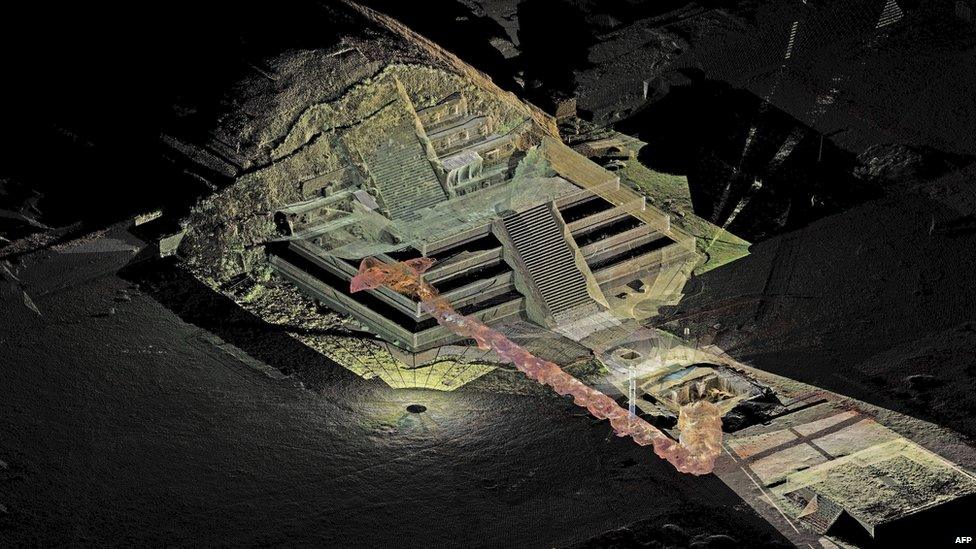
The objects were found inside a sacred tunnel that was sealed about 1,800 years ago.
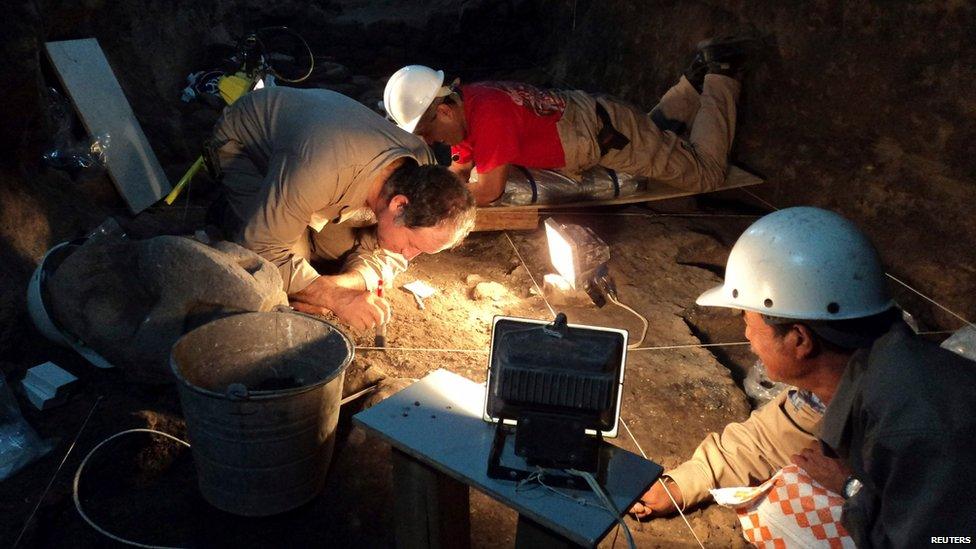
The entrance of the tunnel was discovered in 2003 and its contents came to light after the archaeologists worked meticulously for nine years.
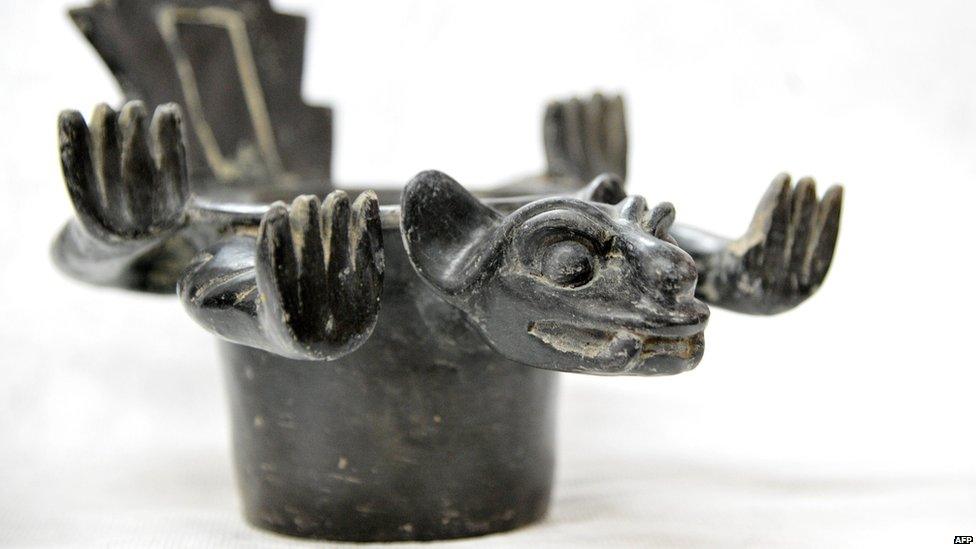
The researchers dug out mountains of dirt and rocks, using remote-control robots, and found zoomorphic vessels like this.
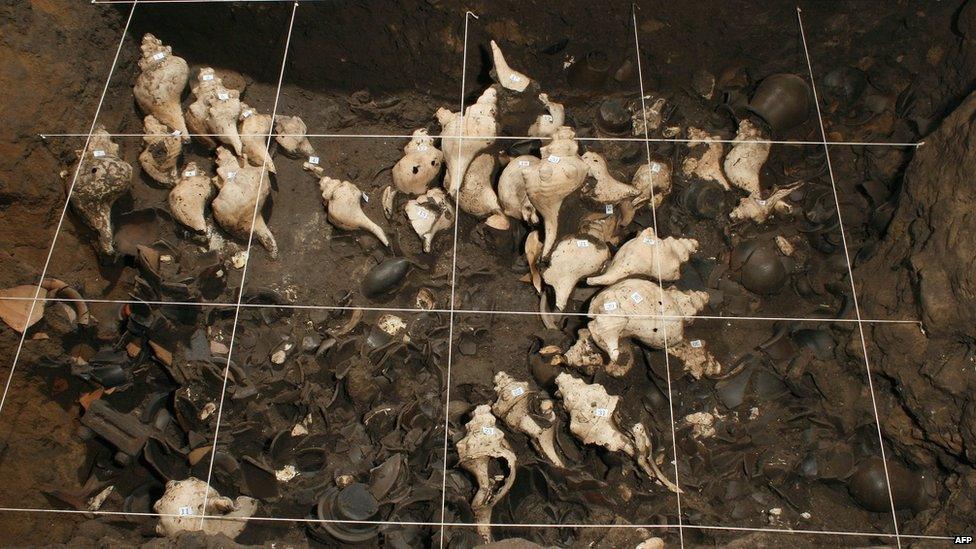
The artefacts, like these sea shells, were unearthed from about 18 metres (60 feet) below the Temple of the Plumed Serpent, the third largest pyramid at Teotihuacan.
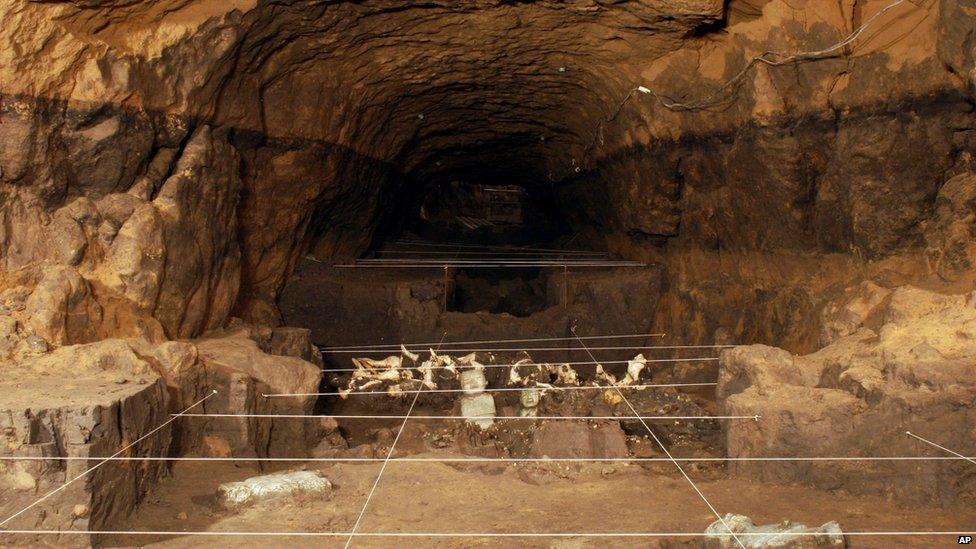
At the end of the tunnel, the archaeologists also discovered offerings just before three chambers, suggesting that the remains of city's ruling elite could be buried there.
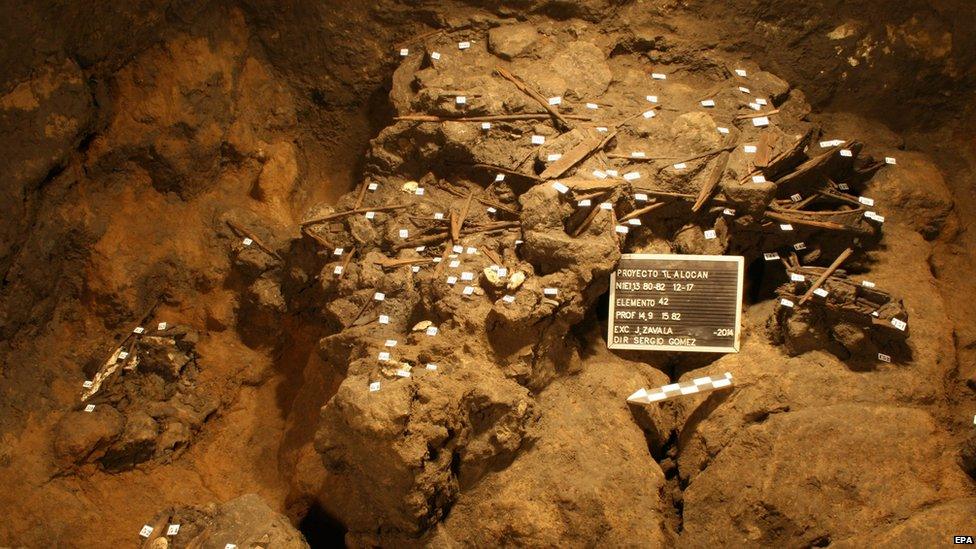
Such a discovery could help shine light on the leadership structure of Teotihuacan, including whether rule was hereditary.
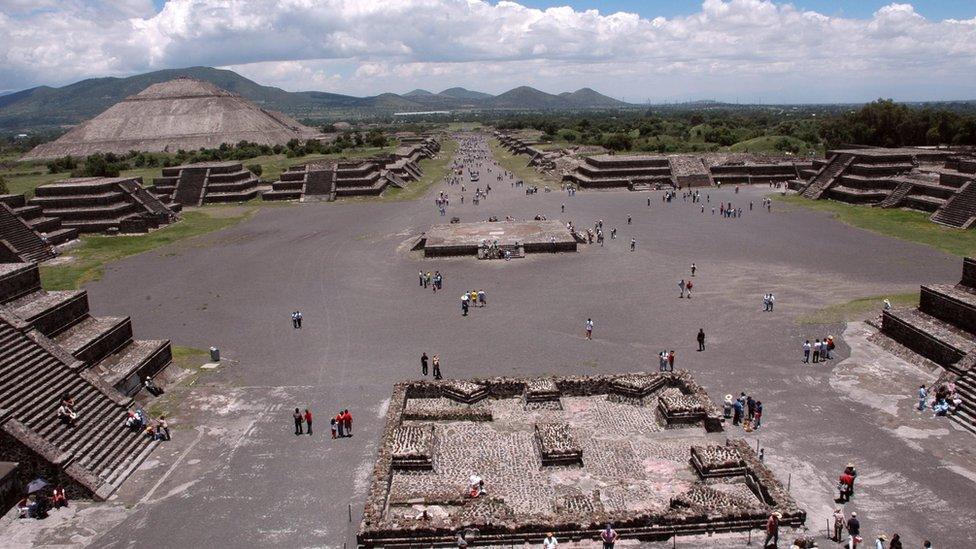
The ancient city is the largest pre-Columbian archaeological site in the Americas, but its ruins have long been shrouded in mystery because its inhabitants did not leave behind written records.